In the ever-evolving marketing landscape, no industry is safe from the continual pendulum swing of SEO updates, new platforms, and changing buyer preferences. Manufacturing marketing has its own unique blend of deliverables and initiatives that can spell success for B2B industrial firms.
In this post, we explore the top content marketing trends for B2B Industrial Manufacturers and some strategic steps you can take to stay ahead of your competition.
New B2B Manufacturing Content Research
The Content Marketing Institute and Content Profs published a comprehensive analysis of content marketing efforts for manufacturing. You can find that research here.
Here are the top five takeaways from the manufacturing content report:
- Manufacturers are embracing content strategy development much more than in previous years. In fact, 41% of manufacturers said they have a documented content strategy — a significant leap from 21% the previous year.
- 65% of manufacturing marketers say their organization is much or somewhat more successful with content marketing compared to one year ago.
- Almost half (48%) of manufacturing marketers report their organization has a small (or one-person) marketing/content marketing team serving the entire organization.
- 64% of manufacturing marketers outsource at least one content marketing activity; content creation is the activity they’re most likely to outsource (87%).
- Manufacturing marketers say 50% of the content they create is for audiences in the early stages of the buyer’s journey (top-of-the-funnel). Far less content is created for stages further down the funnel.
What does all of this mean for your manufacturing organization? It means your competition is seeing the value and ROI from content marketing and is starting to invest in it. And we expect to see this trend continue.
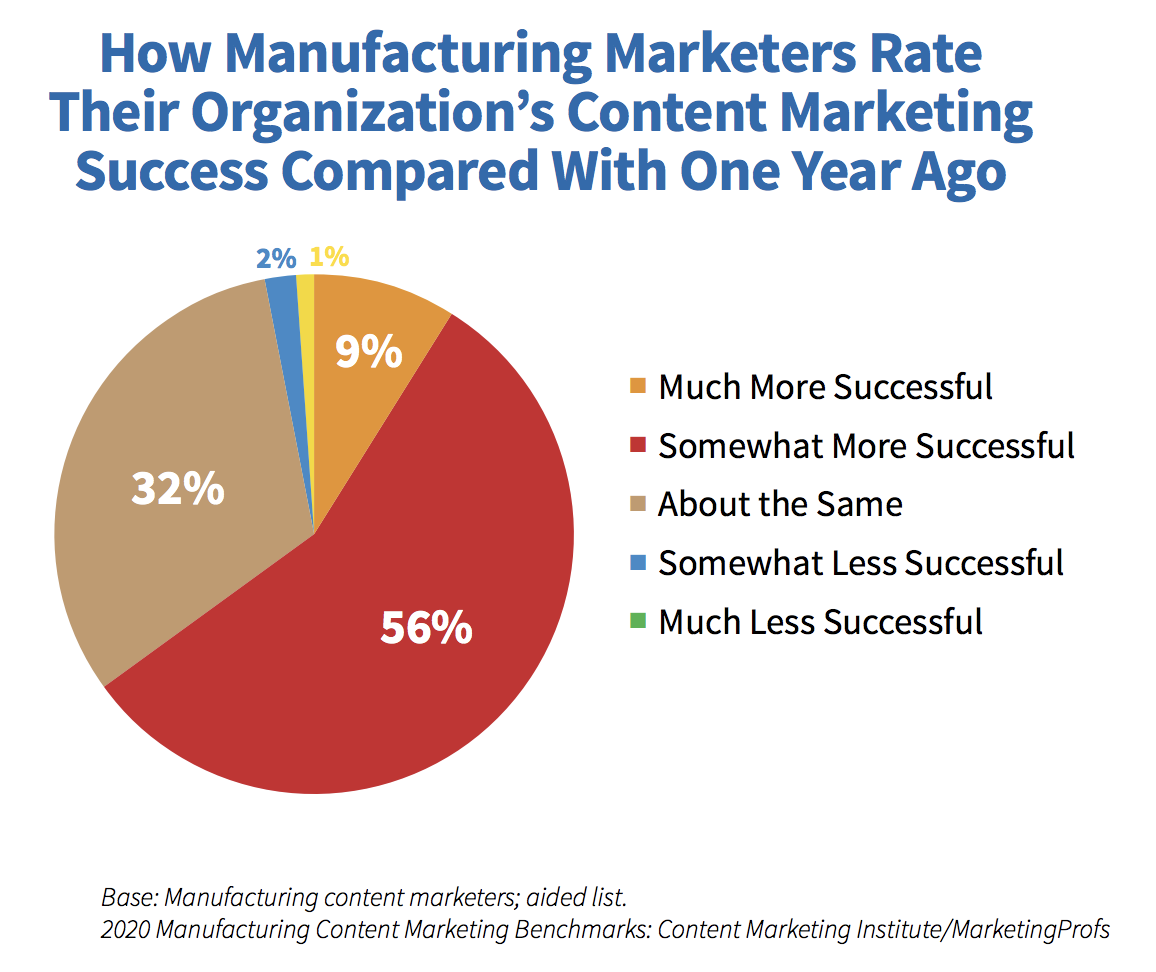
In fact, there has never been a better time to invest in a content marketing strategy for your business.
Content Marketing Tips for Manufacturing
Let’s outline some of the steps your business can take to develop a strong B2B manufacturing content marketing strategy:
1. Develop a strategic, well-researched content strategy
Many of the B2B industrial manufacturers we work with wonder: do we really need a documented content strategy?
The answer is yes. 41% of manufacturers say they have a documented strategy.
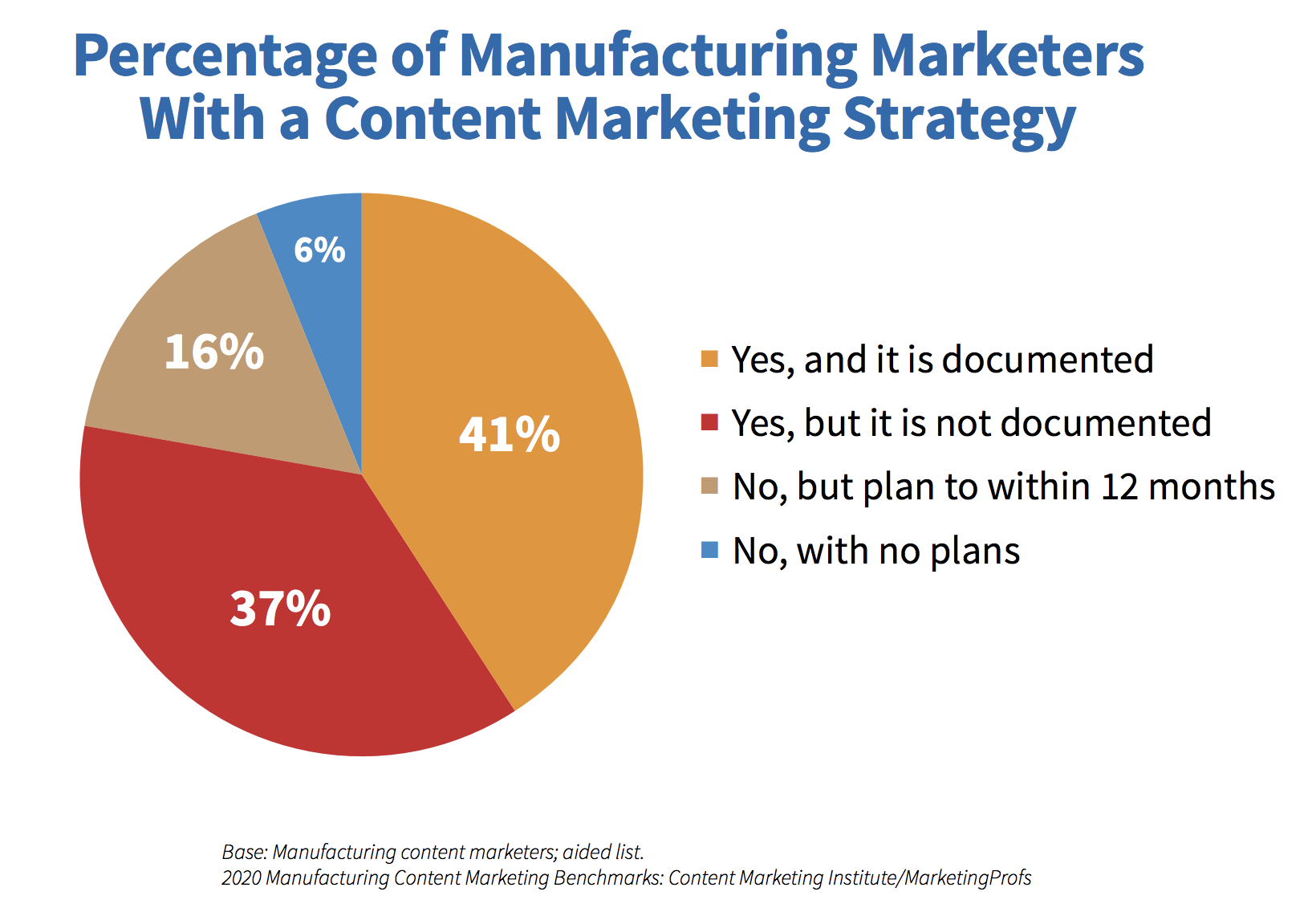
While it’s great to develop content for your blog that answers your ideal customer’s questions, you should always write with an end goal in mind.
Do I really need to write content for my products?
Yes. And it works. One of our clients, TriStar worked with us to put together a comprehensive guide to plastic bearings which thousands of people are searching for every month. Check it out here.
Chances are, your marketing team is small. If you've made it this far in the post you could be a one-person marketing machine. Here's a peek at how other manufacturing teams are structured:
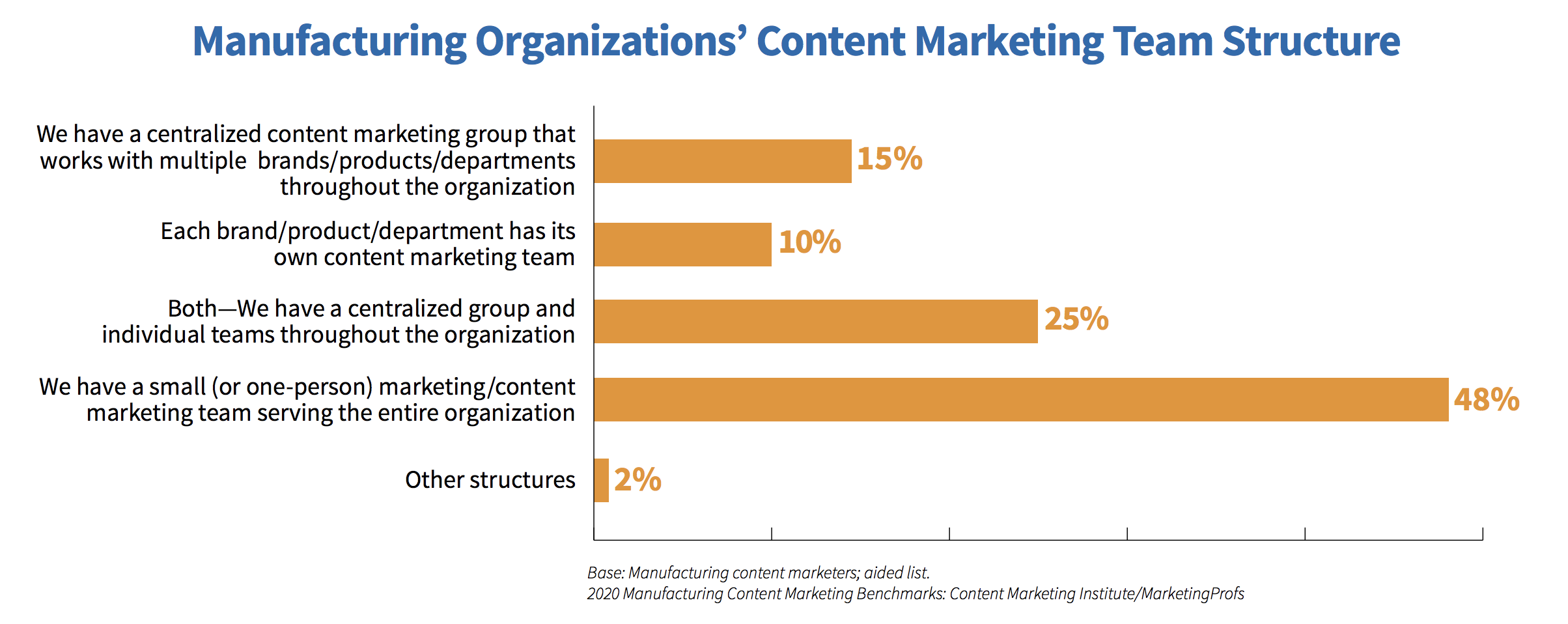
If you're responsible for developing a content strategy for your company, here are the most important elements to include.
What should a manufacturing content strategy include?
- Buyer persona research: You have to know your audience inside and out in order to create content that’s tailored to them.
- Extensive keyword and SEO research: Finding the right keywords — and strategically using them in a way that optimizes your content — can make or break your content strategy. Failure to complete this step is a huge mistake and can lead to negative ROI for your content program.
- A content and site analysis: Find out how your current website and other content outlets are performing. What is your site already ranking for? What do you want it to rank for? Use this information to identify your content gaps.
- Core content topics: What do you want to be known for? What subject should you be an expert in online when people search for your solution? Your research will help you identify your topics. Here's a complete guide that can help you with keyword research.
- A strategic editorial calendar: Regularly publishing strategic and well-researched content is key to your success. A calendar helps you target the topics you want to be known for.
- A dashboard for success tracking: Whether you use HubSpot, Google Analytics, or some other tool, tracking success metrics helps you see what’s working - and what’s not. You’ll want to track at least the following metrics, among others:
-
- Traffic
- Bounce Rate
- SERP features and snippet placement
- Conversion rate (who views your content and then becomes a lead?)
- Attribution reporting (who views your content and then becomes a customer?)
- Keyword and domain ranking
- Inbound links (who is linking to your content from other reputable sites?)
- A really good writer: It’s not enough to know your subject matter really well. You have to present the content in a way that is optimized for both your readers and for Google. You may have someone on your team who is a pretty great writer. That’s not always enough to see ROI from your content program. This is likely why 64% of manufacturers outsource their content creation to experts. A savvy manufacturing marketing writer will simultaneously:
-
- Educate your target audience in a language and voice they understand
- Present your business as the subject matter expert, without being too pushy or salesy
- Optimize your content so it ranks and people can find it
- Write something better than your competitors so you stand out
2. Identify your buyer’s pain points
Understanding what frustrates your buyers gives insight into how to answer the questions they type into Google. There are a few ways you can determine what questions your buyers have:
- Interview your customers: Your customers are your greatest source of information. Ask them what they typed into Google to find you. Ask them what kinds of solutions were searching for. Ask them to explain their buying process. What resources did they go to? What content did they read? What information, insights, FAQs, or product details would be helpful for them to have if they were to buy again? Then, create content that answers all of these questions.
- Interview your sales reps: Your sales team is on the front-lines with your buyers every day. Chances are, they already know what content gaps could be filled.
- Interview your customer service reps: Are there product or service questions that get asked over and over again? These could be great content pieces for those who have similar issues but are working with a competitor.
3. Complete a Competitive Analysis
No content strategy is complete without a comprehensive competitive analysis. Even if your product is extremely niche, there is value in running competitive analysis on highly-related product sites. SEO tools like SEMrush and Spyfu are invaluable when it comes to competitive analysis.
If your competition is doing better than you online, you can use a two-pronged content approach:
- Attempt to rank for keyword and topics that your competition doesn’t rank for or
- Try to steal their existing ranking with better, more helpful, targeted content
What to include in a manufacturing competitive content analysis:
- Top keyword terms
- Top performing content
- Paid keyword terms
- SERP features and opportunities
- Organic ranking history and trends
- Syndicated or paid content partnerships
- Inbound links
Here's an example of how Spyfu analyzes shared organic keywords. Reports like this can help you see what other sites rank for similar phrases -- and where your strongest opportunities for NEW content lie.
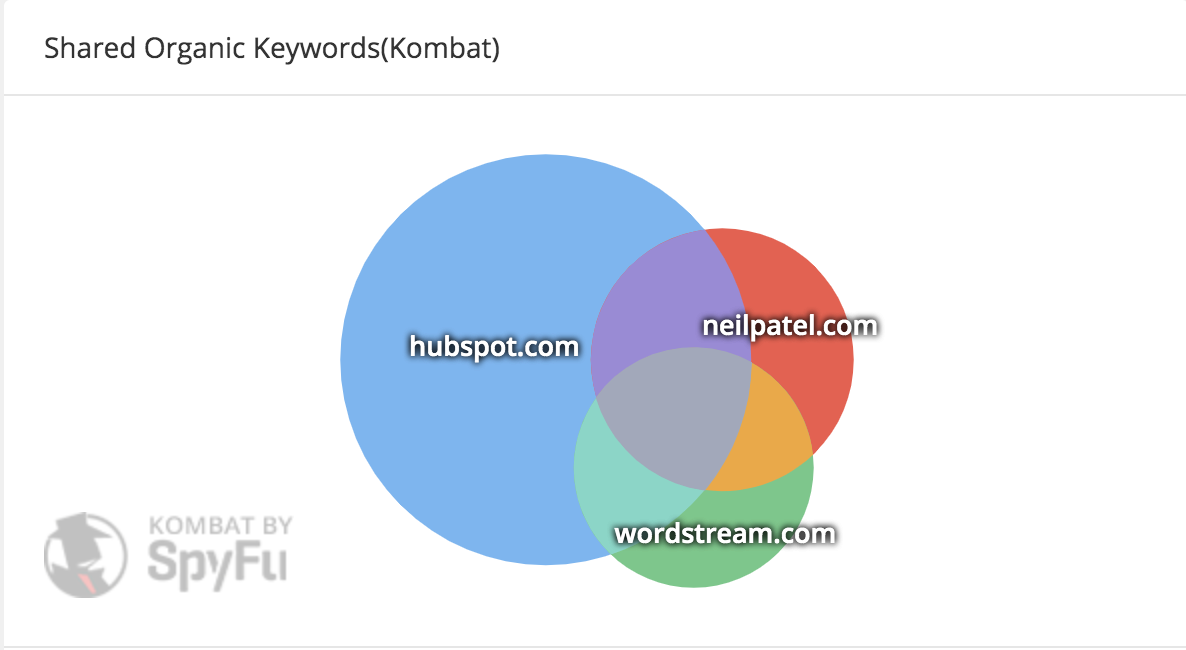
It’s also valuable to see what your competitors are doing on social channels - especially Facebook and LinkedIn. You should have a pulse on your competitor’s email and nurture efforts, as well.
While it’s never a good idea to copy what your competitors are doing, insight into their organic performance and other content marketing efforts can help inform a strategy for YOUR business that outperforms theirs.
4. Create content for every stage of the buyer’s journey
Creating more TOFU content is invaluable for driving more traffic to your website. And that’s why most manufacturers focus more than 50% of their content marketing efforts on TOFU content.
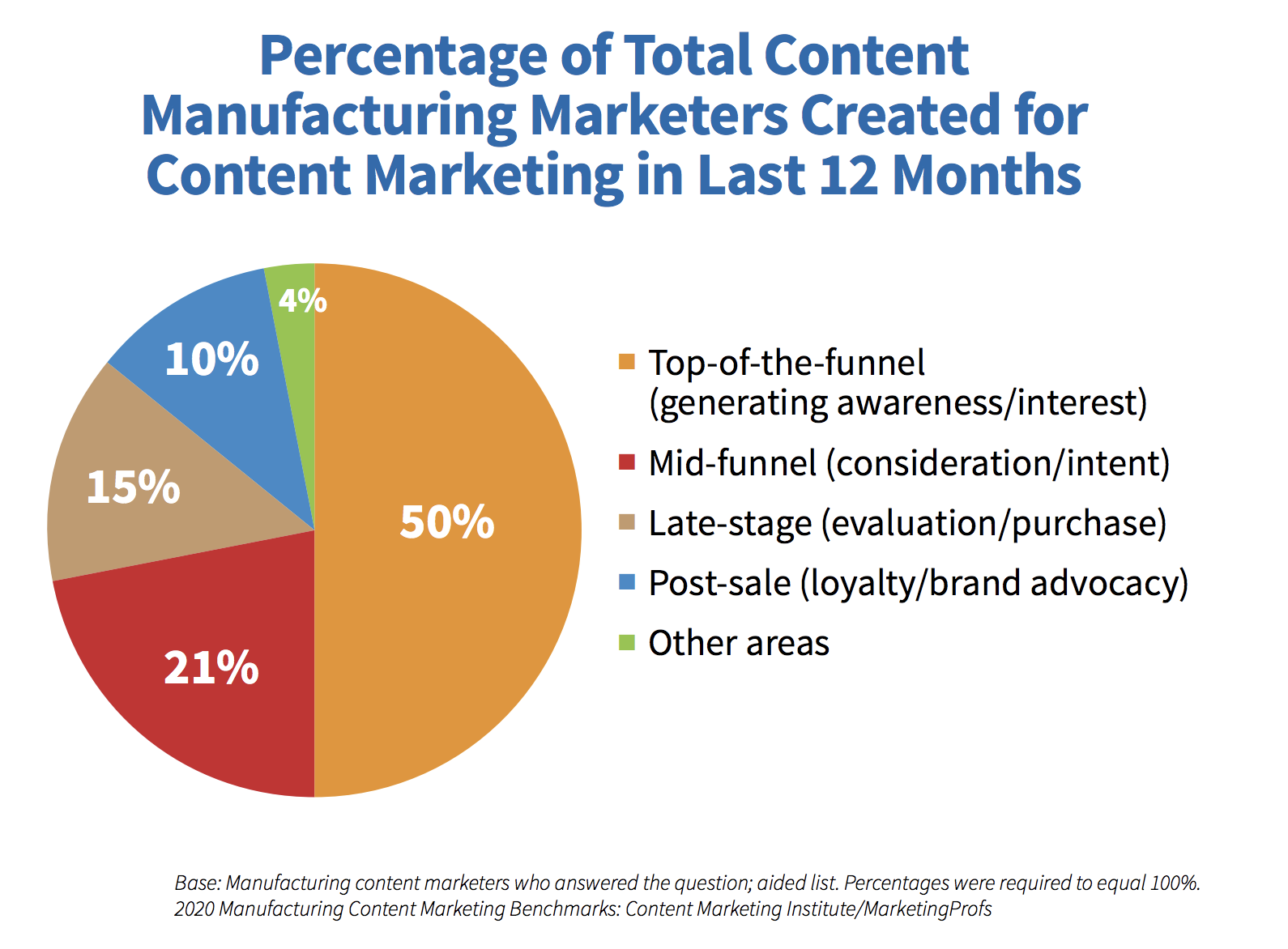
What is TOFU content?
TOFU content (or top of the funnel content) is targeted to buyers who have high-level pain points or questions they want to have answered. In manufacturing, this usually revolves around researching problems they have in their day-to-day jobs. Whether that's solving a business problem (reducing manufacturing time), or solving an equipment issue (streamlining operations). These are usually questions that include:
- What is?
- How to?
- When do?
- Etc.
However, it’s just as important to focus on creating middle and bottom of the funnel content as well.
These are usually product or solution-based questions like:
- The best “X”
- How much does “X” cost
- How long does “X” take to implement
- ROI of “X”
In other words, searchers already know they’re looking for a product or solution you can offer them.
Here's a quick reference guide of marketing jargon if you need it.
IMPORTANT NOTE: It’s not enough to drive more traffic to our site; we need to give our visitors the next step to take once they’re on our site.
How do I get my visitors to take the next marketing step?
Start by adding:
- Actionable CTAs to related, helpful content
- Lots of hyperlinks to related, helpful content
- Clear channels to get in touch with you
- A value-add right on the page. Ex: Download our spec sheet now
- Links to testimonials and success stories
- Links to other channels to learn more, such as subscribing to your email newsletter, finding you on social, etc.
5. Think outside the blog
When manufacturers think of “content” they usually think of creating blog content. And a blog is a must-have for a strong SEO strategy. However, it’s important to create content outside of the blog as well.
What channels should manufacturers use for content development?
- Social media
- Video content
- Newsletter and email nurturing content
- Graphics and interactive content
- Testimonials and customer stories
- Print ads, articles, news stories, press releases, etc.
- Live events, trade shows, and webinars
- Syndicated content and guest blogging
- Paid content
This chart shows how other manufacturers prioritize their content marketing channels:
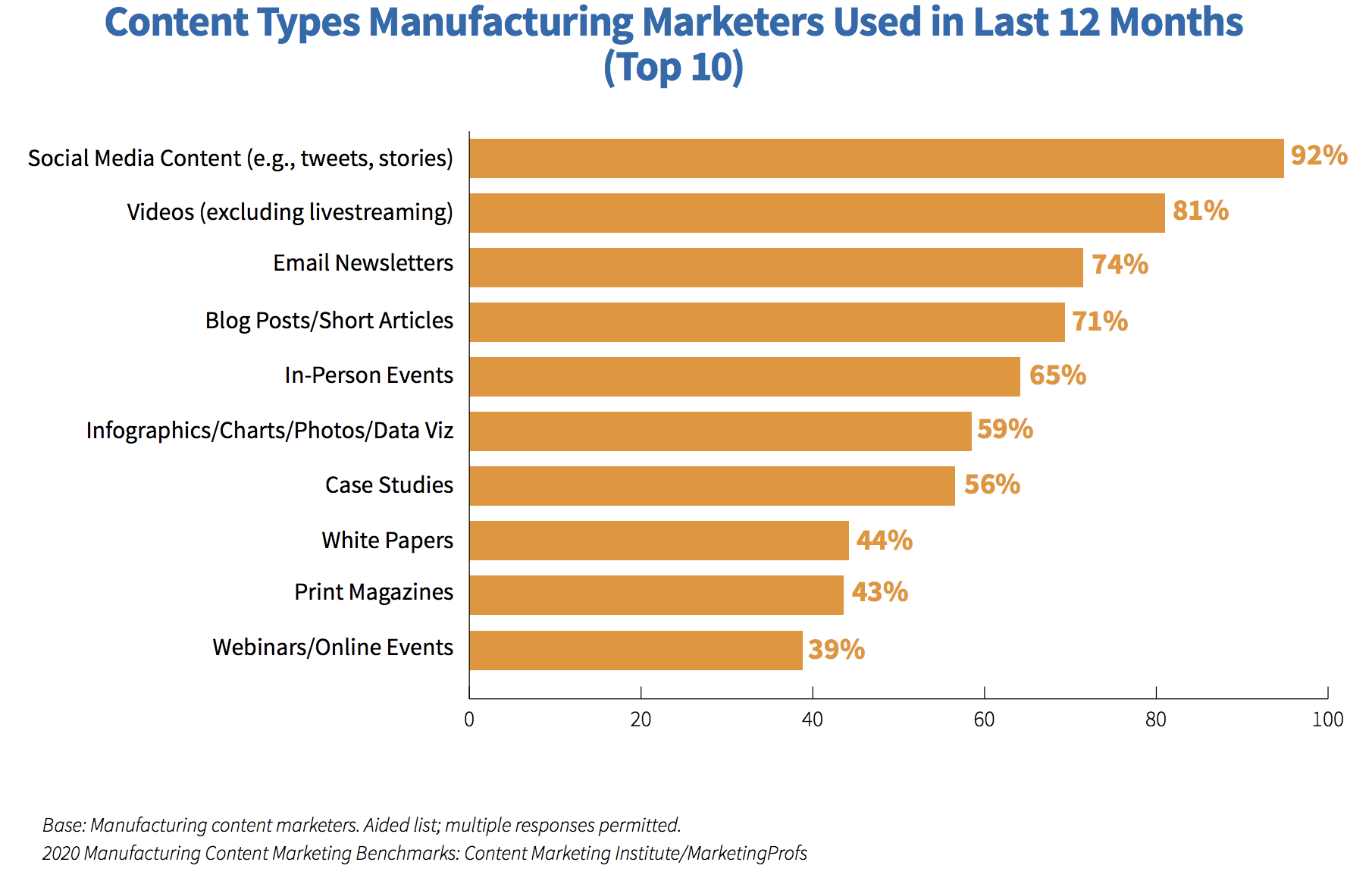
Top-performing content strategies span so much further than the blog, using a variety of content types to cast a larger digital net.
PRO TIP: Content repurposing can really streamline your strategy. A blog can be broken down into 10 - 100 social posts if it’s written thoughtfully. Segments of a webinar or sales presentation can make for great teaser videos. Repurposing your content is an easy way to get fast, free ROI across channels.
6. Invest in your marketing
In the manufacturing industry, especially, you get out what you put in. If most of your business has come from word of mouth or referrals, it could be time to invest in a strong digital presence. A content strategy is the best place to start because it gives you the best long-term ROI online.
Content that you write once can perform for you in the background daily. And thoughtfully written evergreen content can drive exponential traffic growth — sometimes over the course of years.
Want some proof? Our top performing blog post was written more than 3 years ago. Here's a peek at how other manufacturers outsource their marketing services:
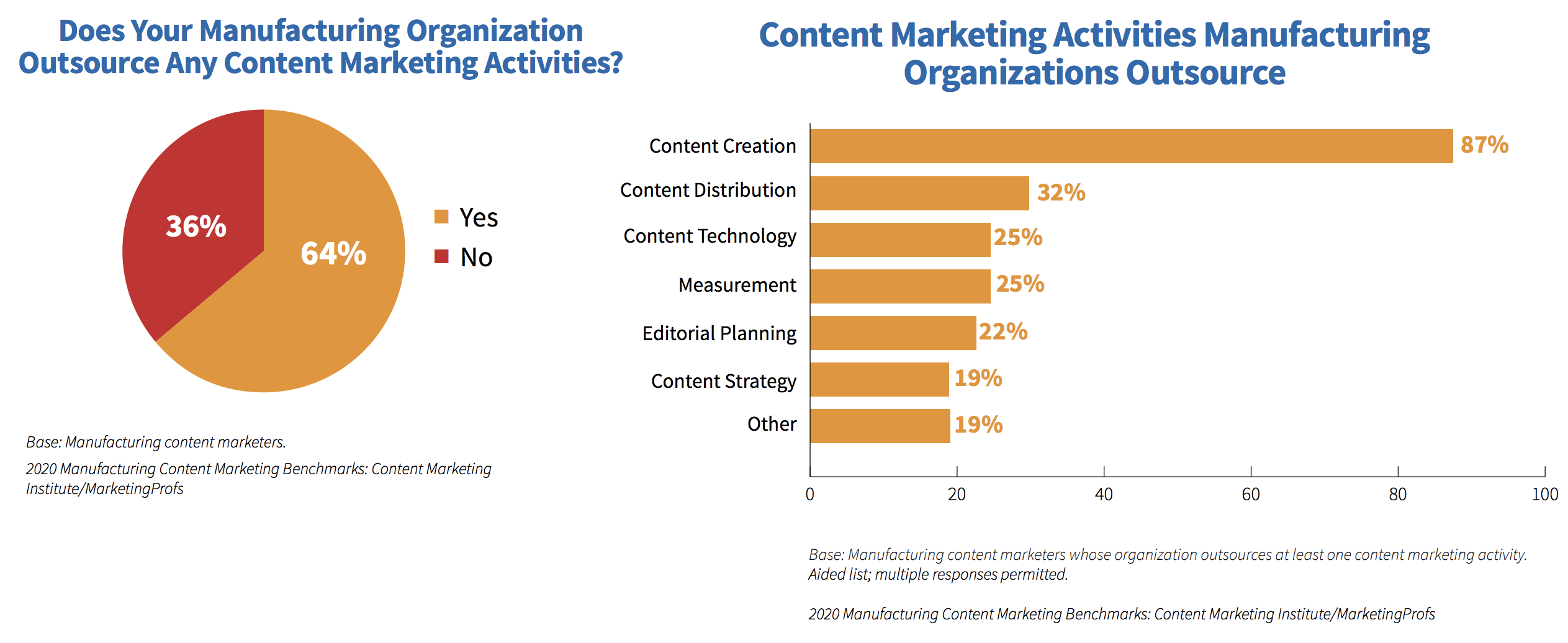
Where should I invest my time and money to create manufacturing content?
- Professional content strategy development: To build a solid content strategy, you’ll need access to paid SEO tools like SEMrush or Spyfu which can cost thousands of dollars. You should also plan to spend between 25 - 75 hours on keyword research, topic research, building an editorial calendar, and setting up your tracking. Not to mention the investment you’ll need to make in writing the content once you have your strategy. Sometimes, outsourcing is much cheaper — and much more efficient — than taking on strategy development yourself.
- A professional writer: Look for someone with extensive experience in and who has written content for your ideal buyer before. Also, make sure they have a strong understanding of SEO and how to write content that ranks.
- Professional paid services: A PPC or Paid Social expert can make sure you are not only creating high-perfoming paid content but that you manage your investment over time. Paid strategy shifts all the time, with new paid competitors added all the time. Managing your paid content strategy and shifting your approach is key to seeing ROI with your paid program. In fact, 66% of manufacturers are already running paid social ads and 61% are running paid search.
- Professional design and interactive content: How great would it be if someone came to your site and could interact with a digital recreation of it right on the page? It’s possible. Not only is interactive and highly-designed content a great sales tool, but it can really help your business to stand out online.
The future of content marketing for manufacturing
As more manufacturers see the value of investing in a strong content marketing strategy the harder it will be for companies to rank. With relatively low competition in the B2B manufacturing content sphere the highest SEO return will come to those that invest in content early.
Why? As your site develops topical authority online, it becomes harder and harder for your competitors to outrank you.
Our advice? Start early. Start today.
How to get started with manufacturing content marketing today
Choose the top 5 questions your customers ask. Type those questions into Google. See what else is ranking. Then, write a helpful, comprehensive, and not-salesy blog post that answers the questions better than anyone else out there. Use unique images where you can. Link to other pages where it makes sense and is related to your topic.
Then, repurpose all of those blogs as social posts scattered over the next six months.
You’re already on your way to making your brand name known online.
Want to see how your website stacks up against other manufacturing sites? Check out our digital lead generation report here:

Do you need some help developing your manufacturing content strategy? I hope you'll reach out today.

















